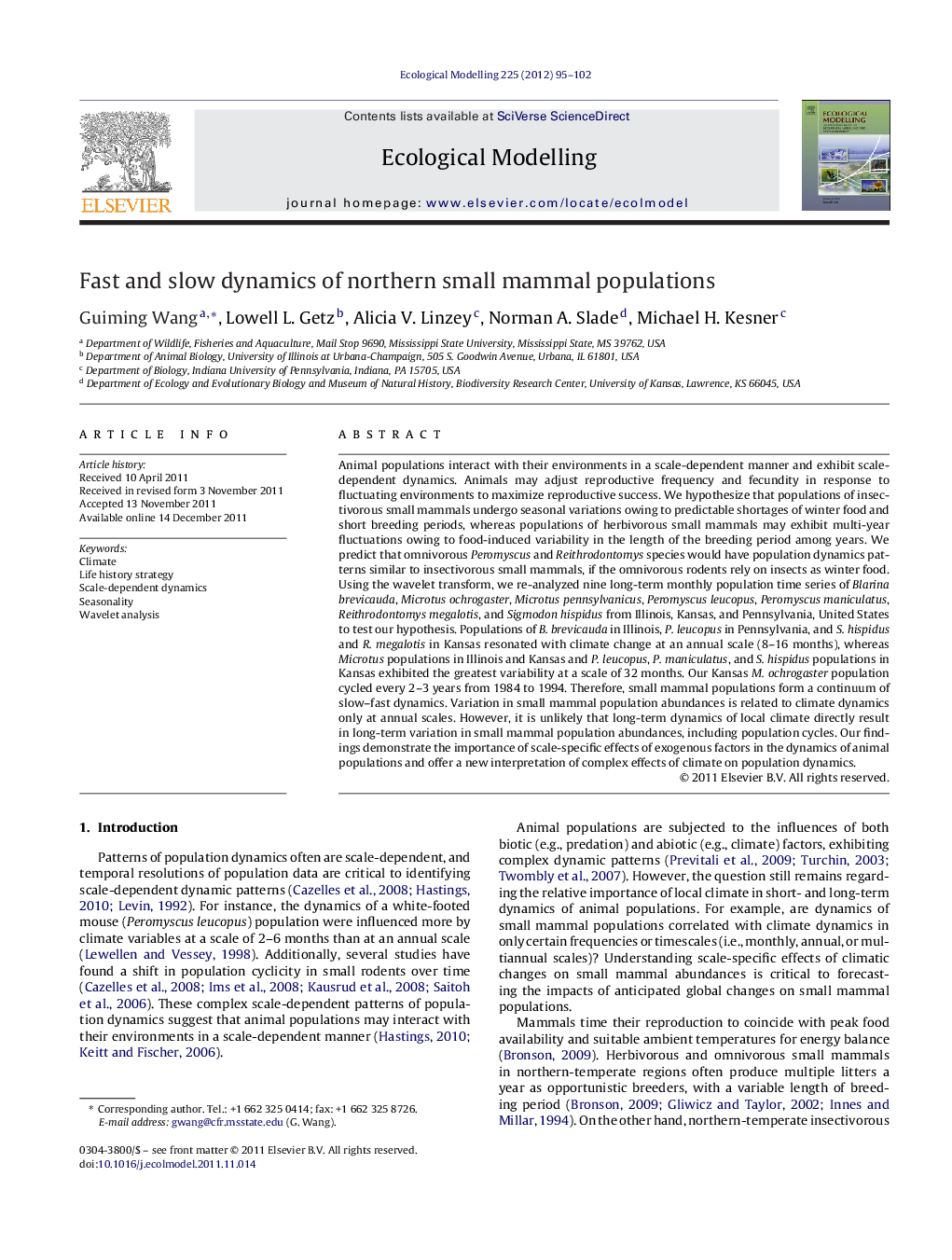| کد مقاله | کد نشریه | سال انتشار | مقاله انگلیسی | نسخه تمام متن |
|---|---|---|---|---|
| 4376603 | 1617518 | 2012 | 8 صفحه PDF | دانلود رایگان |

Animal populations interact with their environments in a scale-dependent manner and exhibit scale-dependent dynamics. Animals may adjust reproductive frequency and fecundity in response to fluctuating environments to maximize reproductive success. We hypothesize that populations of insectivorous small mammals undergo seasonal variations owing to predictable shortages of winter food and short breeding periods, whereas populations of herbivorous small mammals may exhibit multi-year fluctuations owing to food-induced variability in the length of the breeding period among years. We predict that omnivorous Peromyscus and Reithrodontomys species would have population dynamics patterns similar to insectivorous small mammals, if the omnivorous rodents rely on insects as winter food. Using the wavelet transform, we re-analyzed nine long-term monthly population time series of Blarina brevicauda, Microtus ochrogaster, Microtus pennsylvanicus, Peromyscus leucopus, Peromyscus maniculatus, Reithrodontomys megalotis, and Sigmodon hispidus from Illinois, Kansas, and Pennsylvania, United States to test our hypothesis. Populations of B. brevicauda in Illinois, P. leucopus in Pennsylvania, and S. hispidus and R. megalotis in Kansas resonated with climate change at an annual scale (8–16 months), whereas Microtus populations in Illinois and Kansas and P. leucopus, P. maniculatus, and S. hispidus populations in Kansas exhibited the greatest variability at a scale of 32 months. Our Kansas M. ochrogaster population cycled every 2–3 years from 1984 to 1994. Therefore, small mammal populations form a continuum of slow–fast dynamics. Variation in small mammal population abundances is related to climate dynamics only at annual scales. However, it is unlikely that long-term dynamics of local climate directly result in long-term variation in small mammal population abundances, including population cycles. Our findings demonstrate the importance of scale-specific effects of exogenous factors in the dynamics of animal populations and offer a new interpretation of complex effects of climate on population dynamics.
► We studied the monthly dynamics of small mammal population using wavelet analysis.
► Small insectivorous mammals such as shrews and mice exhibit fast dynamics.
► Small herbivorous mammals such as voles exhibit slow dynamics.
► Effects of climate on small mammal populations are scale-dependent.
► Our findings have broad applications to the population of other short-lived species.
Journal: Ecological Modelling - Volume 225, 24 January 2012, Pages 95–102